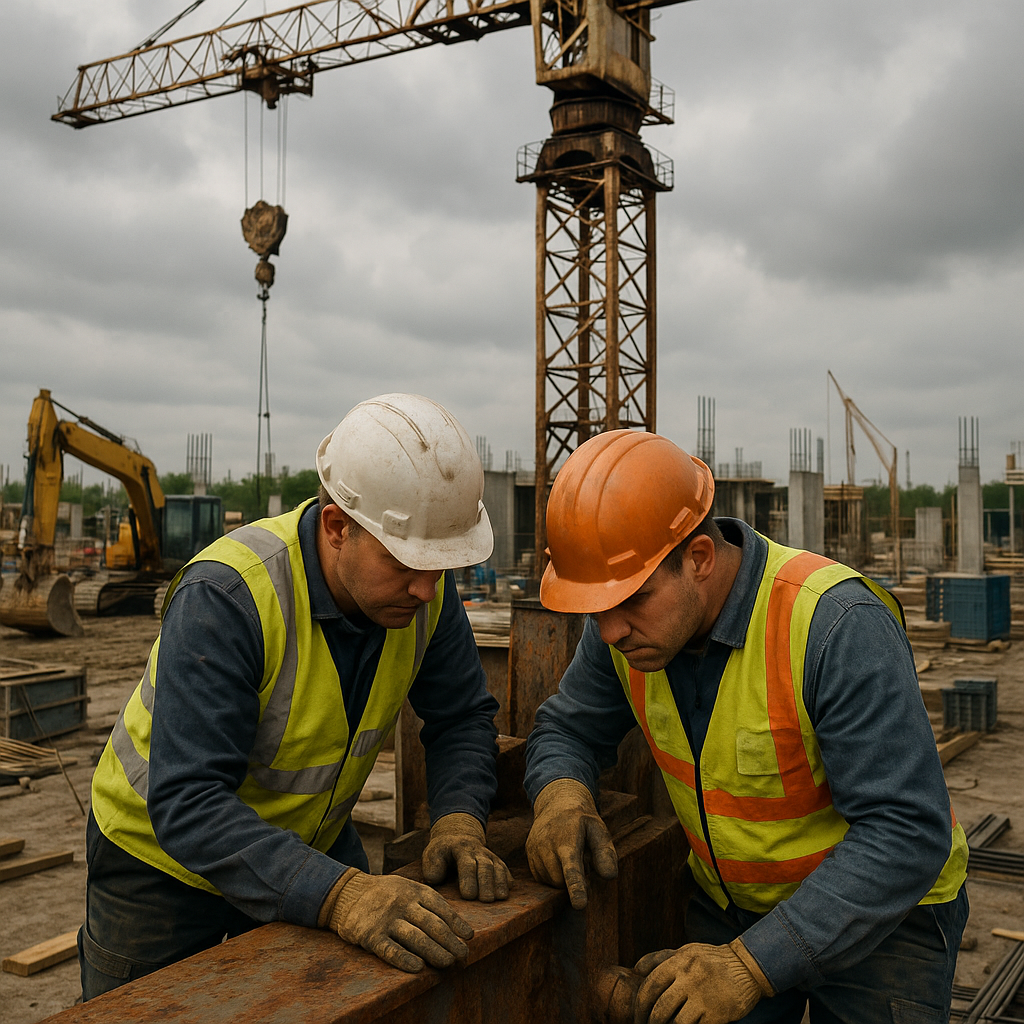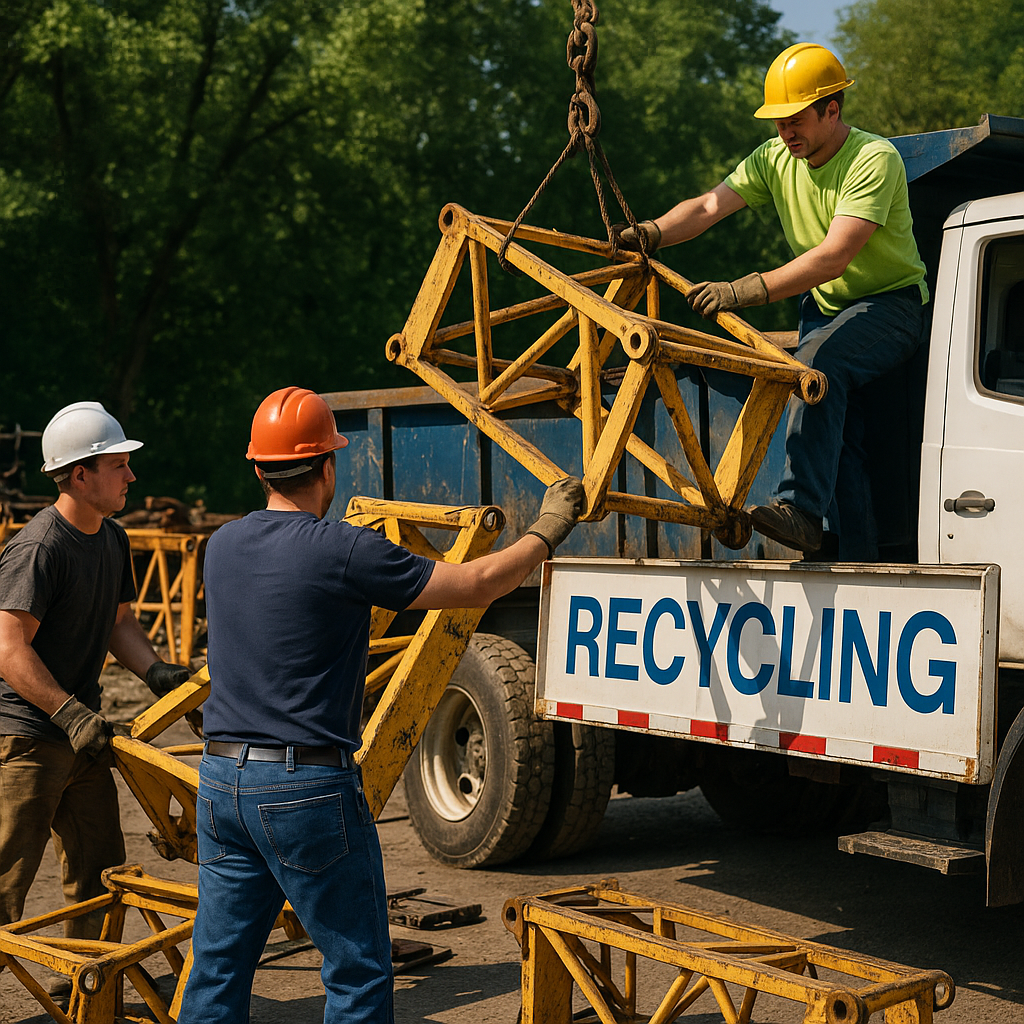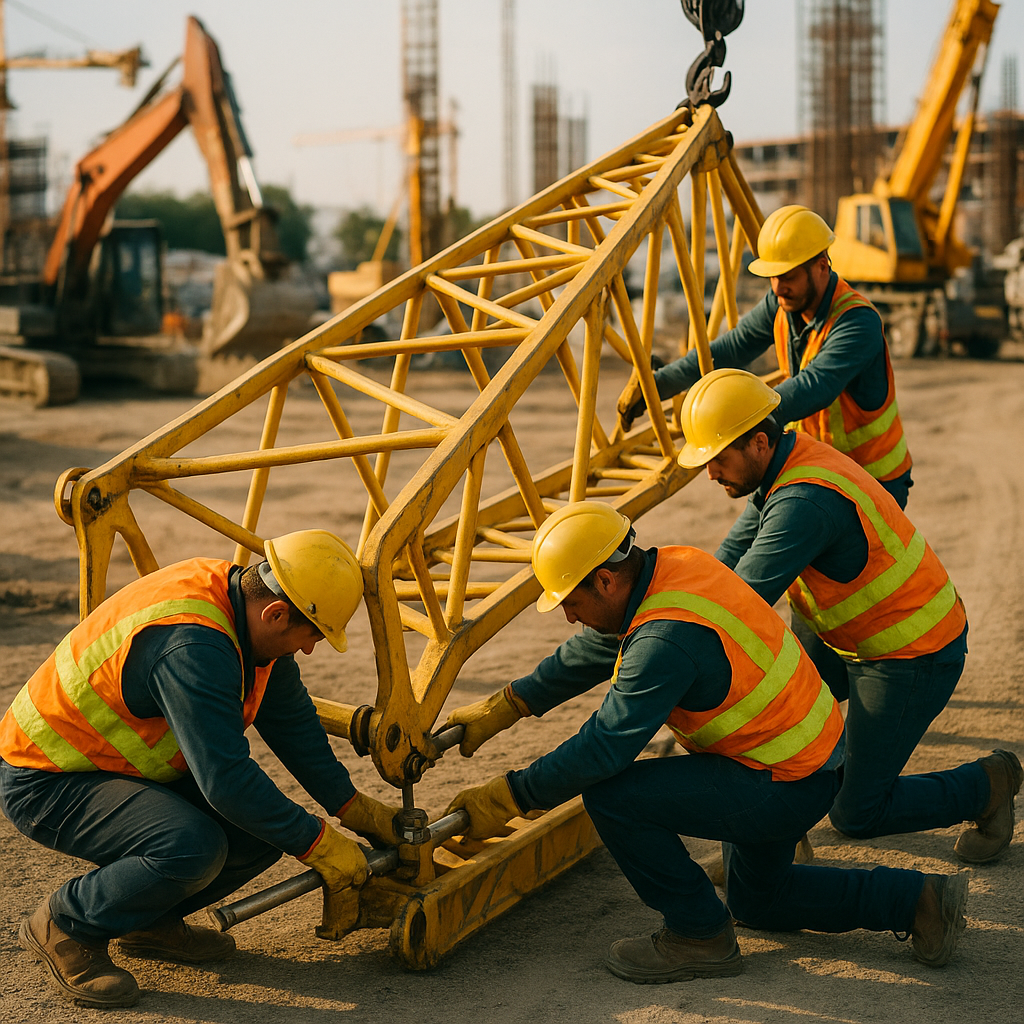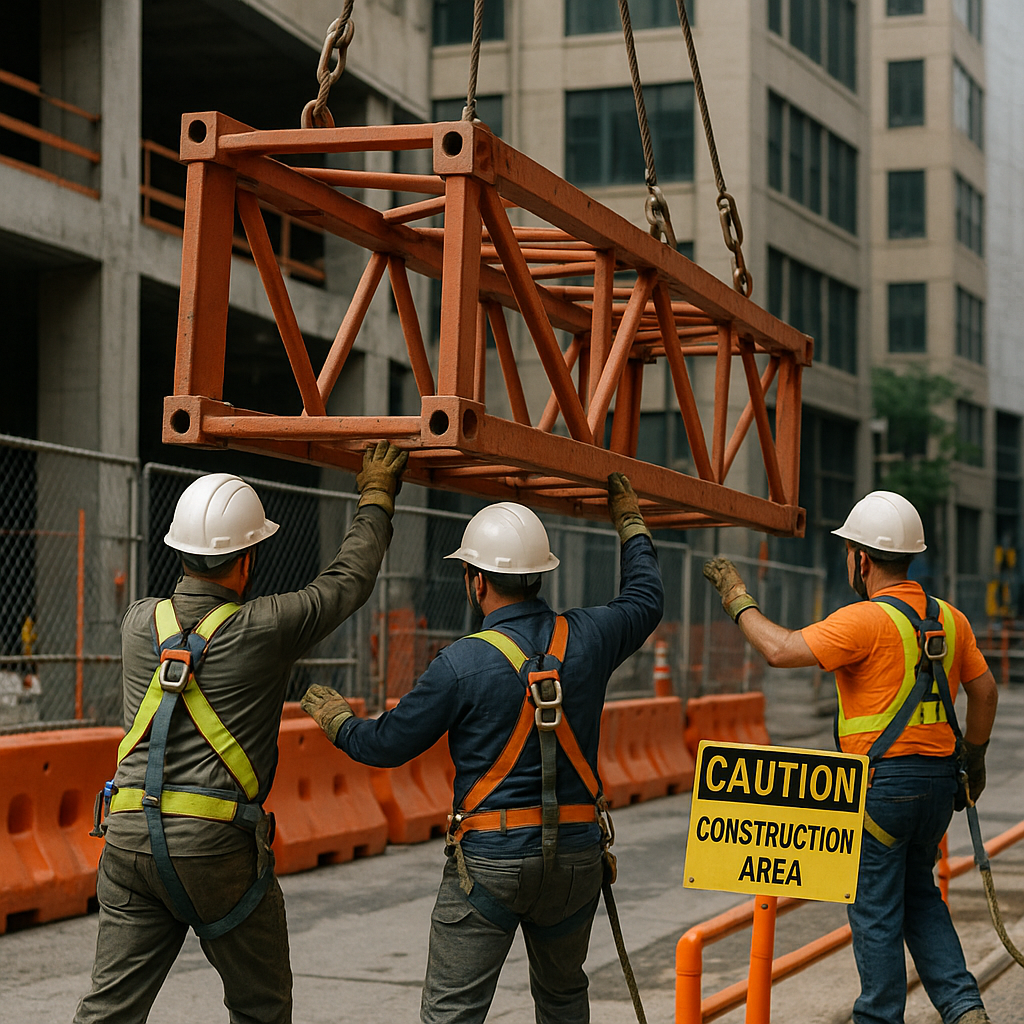5901 Botham Jean Blvd, Dallas, TX 75215
What is Involved in Dismantling and Recycling Large Cranes?
July 30, 2025Against the skyline, massive steel arms of port cranes stand like industrial giants. These towering structures that once lifted countless containers and materials now await their own careful deconstruction. Dismantling these behemoths is no simple task, requiring precision, expertise, and consideration for both safety and environmental concerns.
Dismantling and recycling large cranes involves a highly coordinated process that combines engineering expertise with practical field experience. The process typically begins after a crane reaches its operational lifecycle of approximately 20,000 hours. This endpoint often results from prolonged exposure to harsh elements, excessive loads, or when older models fail to meet current environmental regulations.
The dismantling process is necessarily methodical. Specialized crews use hydraulic systems and climbing frames to carefully remove sections in the reverse order of assembly. Safety protocols guide every step, from disconnecting power to strategically removing counterweights. The result is a controlled deconstruction that transforms these massive machines into manageable, recyclable components.
Why Do Cranes Need to Be Dismantled and Recycled?

Cranes are essential to the construction and shipping industries, but like all heavy machinery, they have a limited lifespan. Exposure to harsh weather, heavy loads, and evolving industry standards can eventually leave even the sturdiest cranes outdated or unsafe.
Dismantling becomes necessary when a crane no longer meets operational requirements, requires costly repairs, or is rendered obsolete by new environmental and safety regulations. Moreover, rapid technological advances and changing project demands may lead to the replacement or removal of older models.
Recycling these massive machines ensures that valuable resources—such as steel, copper, and aluminum—are recovered rather than wasted. This process reduces the need for new materials, supports the circular economy, and limits the environmental impacts of metal mining and production.
Environmental Benefits of Crane Recycling

Recycling large cranes provides environmental advantages that extend beyond merely reducing landfill waste. Most of a crane’s structure is composed of high-quality steel, which can be processed and reused in manufacturing, significantly lowering the energy needed compared to producing steel from raw materials. This recycling process can reduce greenhouse gas emissions—saving up to 74% of the energy compared to primary production (Steel Recycling Institute, 2024).
Proper recycling also ensures safe handling and disposal of oils, hydraulic fluids, and other hazardous materials, preventing soil and water contamination. Additionally, recycling electronic and mechanical components retains valuable rare earth elements and specialty metals, reducing the need for new extraction and minimizing the environmental impact.
Opting for professional crane recycling services enables organizations to achieve their sustainability goals, comply with environmental regulations, and contribute to a cleaner, more resource-efficient future.
What are the Key Steps in the Crane Dismantling Process?

Dismantling a crane requires meticulous planning, specialized expertise, and strict adherence to safety protocols. Here are the critical stages involved in safely removing these massive structures from construction sites.
Initial Preparation and Safety Planning
Before any physical dismantling begins, a comprehensive safety plan must be established. This includes conducting risk assessments, holding detailed safety briefings, and ensuring all personnel are properly trained and equipped.
The preparation phase also involves clearing the surrounding area and establishing a safety perimeter. Workers must inspect the crane thoroughly to identify any potential hazards or structural issues that could complicate the dismantling process.
Weather conditions are crucial in this phase. Crane dismantling should only occur during periods of low wind, as high winds increase the risk of accidents.
Disconnecting Power and Hydraulic Systems
Once safety preparations are complete, the next step involves deactivating all power sources and hydraulic systems, ensuring the crane cannot accidentally activate during dismantling.
Technicians disconnect electrical connections, depressurize hydraulic lines, and secure any movable parts. Specialized knowledge of the crane’s systems is essential to ensure all power sources are properly isolated.
Proper documentation of the disconnection process is crucial for safety compliance and provides a systematic approach for the dismantling team.
Top-Down Disassembly Process
Crane dismantling follows a specific sequence, starting from the highest components and working downward to maintain stability throughout the process.
Workers begin by removing counterweights from the counter jib, then dismantle the working jib, followed by the slewing unit. The operator’s cab is typically removed at this stage as well.
Each component is carefully unbolted and secured before being detached. This methodical approach prevents unexpected shifts in weight distribution that could compromise stability.
Lowering Crane Sections Safely
As sections are dismantled, they must be carefully lowered to the ground, typically requiring secondary lifting equipment like mobile cranes or hoists.
The lowering process demands precise coordination between workers at height and ground crews. Clear communication protocols and standardized signals are essential to prevent accidents.
For high-rise dismantling operations, sections may need to be lowered through openings in the building or guided down alongside the structure with extreme precision to avoid damage.
Material Sorting and Site Cleanup
Once all crane components reach ground level, they must be sorted appropriately. Steel components, which make up the majority of the crane, are typically designated for recycling.
Other materials such as hydraulic fluids, electrical components, and mechanical systems require proper handling and disposal according to environmental regulations.
The final step involves restoring the site to its required condition, which may include removing temporary foundations or reinforcing structures that supported the crane.
The entire crane dismantling process can take several days to complete, depending on the crane’s size, type, and location. Tower cranes used in skyscraper construction typically require more time and present greater challenges than smaller mobile cranes used for lighter industrial applications.
What Safety Precautions are Essential When Dismantling Large Cranes?

Ensuring safety is paramount when dismantling large cranes, as the process involves significant hazards that require strict protocols to prevent accidents and fatalities. Proper preparation and execution are critical for maintaining worker safety.
Risk assessments must be conducted before any dismantling begins. These evaluations help identify potential hazards and determine appropriate control measures, considering all aspects of the operation, including weather conditions, structural stability, and worker positioning.
Detailed engineered plans are essential for safe crane dismantling. These plans must adhere to manufacturer specifications and outline the precise sequence for removing components. If manufacturer instructions are unavailable, a registered professional engineer familiar with the equipment must develop suitable procedures.
Pre-dismantling safety meetings are mandatory. During these briefings, the Assembly/Disassembly (A/D) director must ensure all crew members understand their tasks, associated hazards, and positions to avoid. Effective communication is vital for preventing accidents from misunderstandings or coordination failures.
All workers must use proper personal protective equipment, including hard hats, safety glasses, gloves, and high-visibility clothing, ensuring a crucial layer of protection against common worksite hazards.
Fall protection measures are essential when workers operate at heights. Properly secured harnesses, guardrails, and safety nets help prevent one of the most common causes of serious injuries and fatalities in crane operations.
Special attention must be given to stability during pin removal. Boom sections, suspension systems, and components must be properly supported to maintain stability when pins are removed. Workers should avoid positioning themselves under components during this critical phase unless absolutely necessary.
Wind conditions require careful monitoring throughout the dismantling process. Operations should proceed only in acceptably low wind conditions, as excessive wind can cause instability during temporary unbraced periods.
High-strength steel bolts demand special handling procedures. These bolts store significant energy and can cause serious injuries if released improperly. Workers must follow specific sequences and techniques when loosening these connections.
Competent supervision is crucial. The A/D director must be both a competent and qualified person as defined by OSHA, understand all applicable procedures, and maintain oversight throughout the operation.
Conclusion: The Importance of Professional Crane Dismantling and Recycling

The dismantling and recycling of large cranes is a crucial aspect of safety, efficiency, and environmental responsibility within the industrial sector. Professional crane dismantling goes beyond removing outdated equipment; it involves a comprehensive process to ensure proper material handling and resource conservation. This specialized expertise minimizes risks to personnel and surrounding infrastructure while maximizing the recovery of valuable materials.
Professional dismantling services offer significant benefits beyond safety. They ensure regulatory compliance, protect facility structural integrity, and promote responsible component disposal. When cranes reach the end of their useful life, proper recycling allows steel, electrical components, and other materials to reenter the supply chain. This reduces the demand for new resources and lowers the overall environmental footprint of industrial operations.
For your professional crane dismantling and recycling needs, contact Okon Recycling at 214-717-4083. Our team has the expertise and equipment necessary to handle these complex projects safely, efficiently, and with minimal environmental impact.
